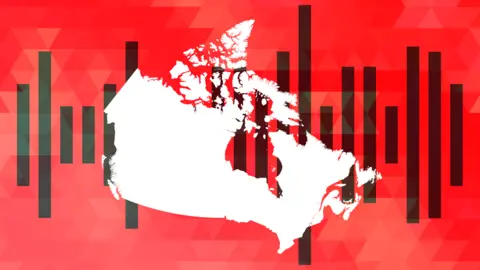The recent Canadian election has drawn significant public attention, especially regarding the anticipated outcomes and the political shifts involved. Notably, Mark Carney’s Liberal Party is expected to secure sufficient seats in the House of Commons to form the next government in Canada, although it remains unclear whether they will achieve an outright majority. This result is particularly noteworthy given the political landscape has been dynamic, with Carney taking over the role of prime minister only in early March following the resignation of Justin Trudeau.
At present, Carney’s Liberals are projected to lead in 168 seats, narrowly trailing the 172 needed for a majority. Meanwhile, the Conservative Party, led by Pierre Poilievre, is positioned to continue as the official opposition, reporting leads in 144 seats. As of now, approximately 99 percent of the polls have reported their results. The election also highlighted the Bloc Québécois, which is anticipated to capture 23 seats, focusing solely on candidates from Quebec, while the New Democratic Party (NDP) manages to lead in only seven seats, with the Green Party represented in just one.
The narrative of the election underscores a notable resurgence for both the Liberal and Conservative parties, as they have captured an increased share of the national vote compared to four years prior. This change in support comes largely at the expense of smaller parties, particularly affecting the NDP, whose popularity has reportedly decreased by approximately 12 percentage points. In an unexpected twist, NDP leader Jagmeet Singh lost his seat in the House of Commons while placing third behind the Liberal and Conservative candidates.
Canada employs a “first-past-the-post” electoral system, which means that the candidate receiving the highest number of votes in each electoral district—or riding—wins that seat and subsequently becomes a Member of Parliament (MP). With both the Liberal and Conservative parties obtaining over 40 percent of the total counted ballots across the nation, they are poised to dominate the parliamentary landscape, potentially securing a combined 90 percent of the available seats. Despite receiving just above 6 percent of the overall vote, the NDP is only expected to translate this into a mere 2 percent of the seats in the House, a stark contrast to the Liberals and Conservatives. The Bloc Québécois is similarly limited, with their share of the vote translating into comparable representation.
Visual representations of election results underscore these findings, illustrating the distribution of seats won by each party across Canada’s provinces. In key provinces like Ontario and Quebec, which comprise a majority of the electoral districts, the Liberals are predicted to gain the highest number of seats. Conversely, in Alberta, the Conservatives maintain a clear advantage, while British Columbia presents a more competitive battleground where both major parties vie for electoral strength, indicating a volatile political landscape nationally.
Beyond the numerical data, analysis of the election results invites deeper contemplation about the shifting political allegiances of the Canadian electorate. The increased strength of the two major parties further reflects a potential consolidation of power, leaving smaller parties like the NDP searching for avenues to regain influence. Considering these dynamics, the forthcoming government under Carney’s leadership, if formed by the Liberals, will be tasked with addressing economic challenges and public expectations while navigating a politically divided nation.
In conclusion, as Canada embarks on this new political chapter, citizens and observers alike remain engaged and vigilant, watching how the Elections Canada results will reshape the landscape of power and influence in their government. The implications of the electoral outcomes extend beyond immediate party representation, shaping the trajectory of national policy and governance for years to come.



